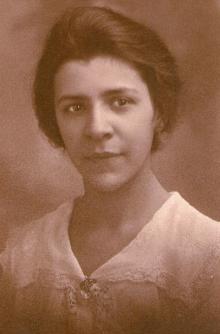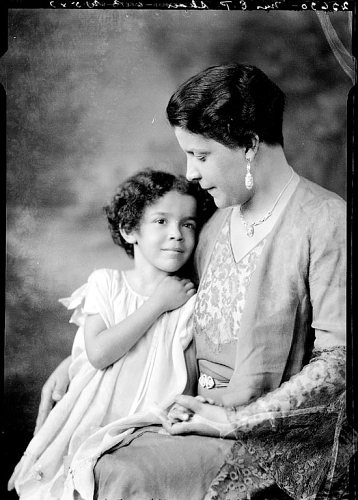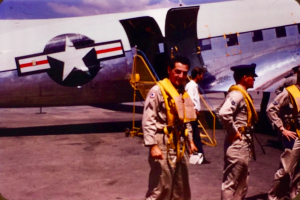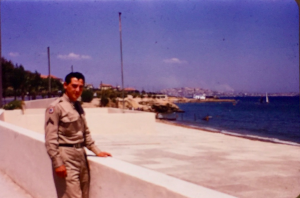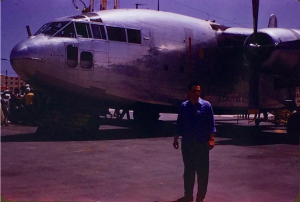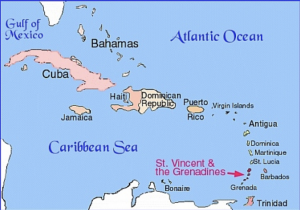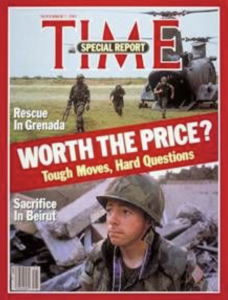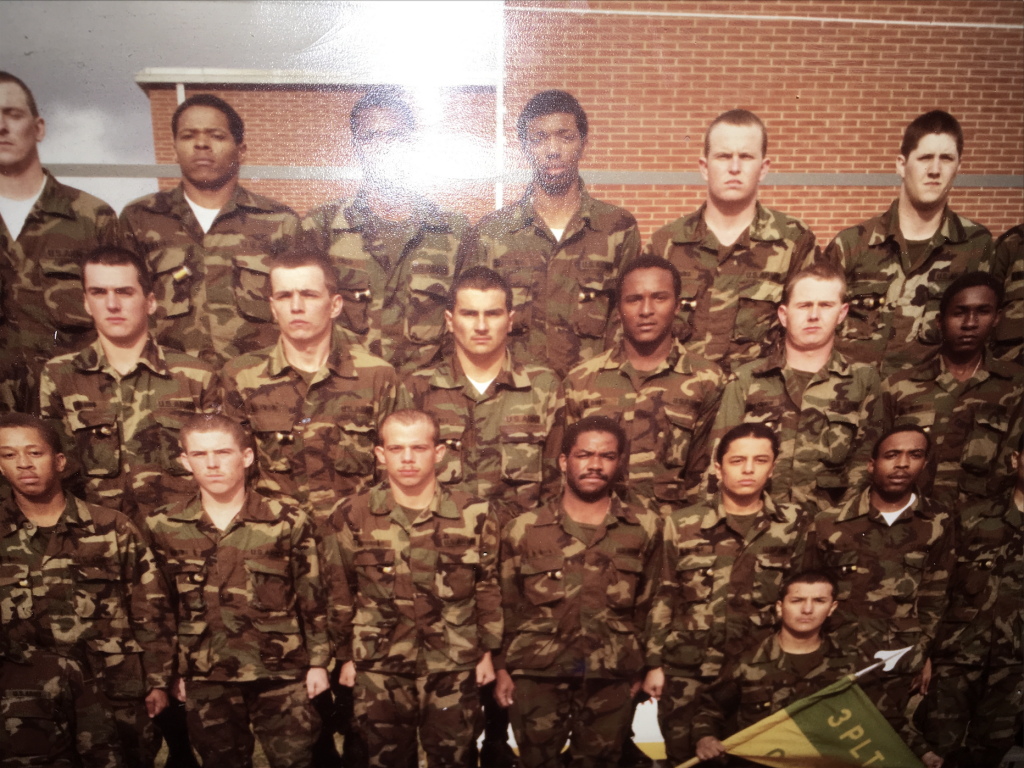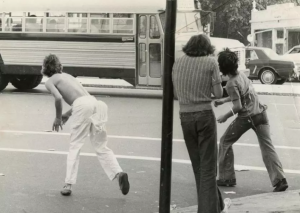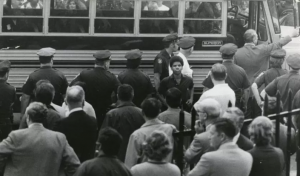By: Mitchell Snyder
In June of 1976, the future of the Republican Party remained uncertain as delegates and candidates alike entered a convention without a candidate. In the months leading up to the gathering, neither President Gerald Ford or Governor Ronald Reagan had secured enough primary wins to claim the coveted nomination outright.[1] Throughout the crowds of delegates, politicians and campaign staff, whispers of uncertainty spread. Among this crowd was a young Charlie Gerow, a college student and an outspoken Reagan loyalist. He was there to support the man he believed would one day sit in the oval office, a belief that would become reality four years later.[2]
Charlie had first met the former California governor in Washington D.C. at private meeting arranged by a colleague he had met while volunteering for the Republican Party in Pennsylvania. Gerow recalls the meeting fondly: “I was still a sophomore or junior in college… I had the chance to meet the future President of the United States for four or five minutes, one on one. Which was really, at that point in my life, the greatest thing that ever happened.”[3] Since that day, he dedicated countless hours workings towards one goal – making Ronald Reagan the President of the United States.

The National Interest, Lee Edwards
President Ford invites then Governor Reagan to address the 1976 Convention.
At the 1976 Republican Convention, Charlie remembers a profound sense of confidence among the Reagan delegation. Despite being behind in both polls and primary wins, the Reagan camp believe they had both the momentum and enough ‘tricks up their sleeves’ to secure the nomination.[4] Unfortunately, this confidence would soon be replaced by a deep sense of disappointment. Despite the Reagan team’s best efforts, the convention had a nominee and it was President Gerald Ford. However, this wasn’t the end of Ronald Reagan’s political life. In an unprecedented moment, President Ford invited his defeated opponent, Ronald Reagan, to address the convention. According to H.W. Brands’s Book, American Dreams, this prompted “…many delegates – ‘eyes glistening with tears,’… to conclude that the convention had chosen the wrong candidate.”[5] Gerow had the same impression as he stood in the convention hall. “…[I] was there in the hall of the house when President Reagan spoke, and heard that tremendous, uplifting, emotional speech which left many of the delegates, kind of, scratching their heads saying, ‘did we just nominate the wrong guy?’”[6]
This belief would be solidified the following day when Ronald Reagan addressed his own mini-convention of supporters and staff following the loss to Ford. Charlie was among crowd who had gathered at the request of their defeated candidate, eager to hear what he had to say. Reagan took this time to thank those who had worked so hard to get him nominated. He told them the fight wasn’t over and the future was bright. In this moment, Charlie knew this wasn’t the end of the Reagan story. “There wasn’t a dry eye in the house, but everyone left that room knowing that Ronald Reagan would be back.”[7]
In November 1979, Charlie joined county chairmen, elected officials, and volunteers on a journey from Central Pennsylvania to the Hilton Hotel in Midtown Manhattan to hear Ronald Reagan announce his candidacy for President of the United States. It had been four long years, and much had changed. Charlie was now enrolled at Villanova Law School working towards achieving his J.D. However, his dedication to Ronald Reagan remained firmly in place. He had been invited on this trip by his friend and the Reagan campaign manager for Pennsylvania, Drew Lewis. Drew had played host on the ride down. He had brought them coffee and snacks to help make the long pilgrimage seam more enjoyable. Charlie remembers that night like it was yesterday. “He [Ronald Reagan] introduced that night and played on National television a video announcing his campaign, which, was kind of an edgy piece of campaign technology, at that point… It really went over exceptionally well and paved the way for his 1980 successful campaign for President.”[8] He remembers the pure excitement in the air that night. “The energy level was really incredibly high. Ronald Reagan’s ability to connect with people as the great communicator was really on full display that night in New York… People left highly motivated and highly energized and ready for the tough campaign that was to come…”[9]
Throughout the primary Reagan was quick to emerge as the front runner in the crowded field of candidates. One such moment that showcased Reagan’s leadership occurred during a primary debate. This debate was a controversial to say the least. The Federal Elections Committee decided that the debate, which was sponsored by a local newspaper, that excluded all other candidates except the front runners (Reagan and Bush), constituted an improper campaign contribution. In response to this, the Reagan’s campaign paid for all the candidates to join the debate to circumvent this ruling.[10] During this debate, the moderator John Green instructed for Reagan’s microphone to be but off prompting the response “I am paying for this microphone, Mr. Green!” Gerow remembers this moment as a pivotal part of the primary campaign. He explained “The reason that was so important was voters saw in that moment the definitive notion of who Ronald Reagan was… It didn’t matter what was said at that debate because no one remember one word. They remember that little tinny vignette, that moment in time when Ronald Reagan’s leadership and strength showed through.”[11]
Charlie says it is important to understand that Reagan’s strong responses to attacks on him didn’t end up manifested in grudges. In fact, throughout the campaign he observed Reagan rarely held grudges against his primary opponents. He remembers one incident where “ There had been a dust up with [Senate Majority Leader and Primary Opponent] Howard Baker… there was some hard feelings… [but] Ronald Reagan was getting ready to call Howard Baker about something, and one of his aids said “You can’t do that, you can’t do that” Reagan just gently leaned back and said ‘Oh yeah, I am suppose to be mad at him aren’t I?’”[12]
Following the primary Charlie Gerow became involved in the campaign in a more official capacity. “After the primaries were concluded in the 1980, I actually got a pay check – which was really important to a young man right out of law school! I went to work as a Political Director, Regional Coordinator for the Reagan Campaign.”[13] In this position, he worked to build coalitions throughout Pennsylvania to help bring in the needed support to defeat Jimmy Carter. He remembers one of the defining moments that “made a real difference” was the final debate. Gerow explains “The debates were Ronald Reagan’s shinning moments… the race was still neck and neck, many polls showed Jimmy Carter ahead… Ronald Reagan was able to define himself and at the same time contrast himself with Jimmy Carter, particularly in the final debate where he looked in the camera in the eye and said to the American people ‘Are you better off now than you were four years ago?’”[14]
In describing the results of the 1980 election H.W. Brand’s writes “It wasn’t surprising that Reagan won handily.”[15] However, Gerow remembers quite a different feeling among the Reagan team that night. He explains the staff had worked for weeks to prepare for Election Night 1980. Gerow remembers “.. we were all hunkered down with you know computer which, in those days, were almost unheard of… We had all sorts of sophisticated models to check out votes as they came in and make projections etc.” The Reagan staff expected to be up late into the night, believing the election would be extremely close. In fact, in preparation of their anticipated all-nighter they took some time to eat dinner and relax before the stressful night that was coming. However, Gerow explains “By the time we had finished dinner the news was announcing Ronald Reagan had been elected because it was such a landslide. Nobody, I don’t think, really thought it would be as wide a margin as it turned out to be.”[16]
The following that historic night the Guardian reported “Ronald Reagan will be the next President of the United States. He was heading for the White House early today in what appeared to be a landslide victory in the presidential election.”[17] This marked the end of Reagan’s 1980 campaign but the beginning of what is often referred to as the Reagan Revolution. A time where conservative ideas of lessened regulation, traditional values and smaller government became the staples of the American system.[18] A revolution that was lead by its charismatic spokesman Ronald Reagan. Gerow believes that Reagan’s gracious nature is what made this revolution possible. He was able to connect with voters of different backgrounds and make them feel important. “Folks use to say when you walked into the room with Ronald Reagan you knew he was the most important man in the world and when you left you felt like you were.”[19]
Citations:
[1]Randy Roberts & David Welky, Ronald Reagan Treasures: The Life of the Great Communicator in Photos & Memorabilia (San Diego: Thunder Bay Press, 2015.) 93-94.
[2] In person interview with Charlie Gerow, Harrisburg, PA, April 25th, 2018.
[3] Ibid.
[4] Ibid.
[5] H.W. Brands, American Dreams: The United States Since 1945 (New York: Penguin Books, 2010), 216.
[6] In person interview with Charlie Gerow, Harrisburg, PA, April 25th, 2018.
[7] Ibid.
[8] Ibid.
[9] In person interview with Charlie Gerow, Harrisburg, PA, April 18th, 2018.
[10] Dufresne, Louise. “Ronald Reagan’s Testy Moment in the 1980 GOP Debate.” CBS News. February 11, 2016. Accessed April 26, 2018. https://www.cbsnews.com/news/reagans-testy-moment-in-the-1980-gop-debate/.
[11] In person interview with Charlie Gerow, Harrisburg, PA, April 25th, 2018.
[12] Ibid.
[13] Ibid.
[14] In person interview with Charlie Gerow, Harrisburg, PA, April 25th, 2018.
[15] H.W. Brands, American Dreams: The United States Since 1945 (New York: Penguin Books, 2010), 217.
[16] In person interview with Charlie Gerow, Harrisburg, PA, April 25th, 2018.
[17] Harold Jackson & Alex Brummer, The Guardian Historical Archieve, A Landslide makes it President Reagan: Aides tell tearful Jimmy Carter that ‘It’s all over.’
[18] H.W. Brands, American Dreams: The United States Since 1945 (New York: Penguin Books, 2010), 232-236.
[19] In person interview with Charlie Gerow, Harrisburg, PA, April 18th, 2018.
Image Citations:
[1] Edwards, Lee. “President Ford Invites Then Governor Reagan to Address the 1976 Convention.” The National Interest.
[2] “Reagan Stares down Mr. Green after Exclaiming ‘I Am Paying for This Microphone, Mr. Green!”.” CBS News.
[3] “President Carter and Then Candidate Ronald Reagan Debate.” The Washington Times.
[4] “President-Elect Reagan and His Wife Nancy Celebrate Their Victory!” Communities Digital News.
Selective Interview Transcript:
[NOTE: This is a transcript of excerpts from a much longer interview recorded & conducted in person.]
Q: How did you become involved with Ronald Reagan campaign?
A: “I always found President Reagan to be a fascinating person. He was unlike any politician I had ever encountered. He was charismatic, a talented speaker, and more than anything he wasn’t boring to listen to. He didn’t get bogged down in small details, not that he didn’t know them, he just understood that the people wanted to hear something more, something more real.”
Q: What do you mean by real?
A: “Well, it is something that real Americans can related to. They certainly couldn’t relate to President Carter and his focus on data points and statistics. People wanted someone who they could picture as one of them – President Reagan was certainly able to related to them in that way.”
Q: After the 2016 election, we heard a lot of talk about polling and the role of the media in politics. What was the attitude towards these things on the Reagan Campaign and by Reagan himself?
A: “As expected, our campaign staff certainly kept track of what the polls and pundits where saying. As someone who works with the State Party yourself, you know the importance of staying up to date – or at least I hope you do! [Laughter] However, unlike the average politico or politician now-a-days, President Reagan didn’t guide himself using polls or talking heads. He would spend much of his time speaking with voters about the values and principles that he believed were right and let the chips fall where they may.”
Q: What was the climate in the U.S. prior to the 1980 election?
A: “It wasn’t great. People were significantly unhappy – facing unemployment, inflation and a lack of confident leadership. There were Americans being held hostage abroad, you know the hostages, and many voters believed that their best days were behind them.”
Q: You worked very closely with President Reagan throughout your time as one of his Campaign Aides. What was the most surprising thing you observed about him?
A: “Well, lets see. That’s a tough one – as aides we saw a lot. I would have to say it was how he treated our campaign rivals. You see, he wasn’t like any politician I had met prior. Many of them kept these lists of people who they believed had wronged them. A list of enemies that that could finally get some sort of retribution back from once the election was over. He simply didn’t do this. In fact, I recall one incident during the 1980 campaign when a rival said especially nasty things about the President. Shortly after, he [President Reagan] actually went to call the man about another topic. All of us were shocked – we thought this could clearly only encourage more negative behavior. So, we advised him against it. He responded, ‘Oh yeah, I’m supposed to be mad at him, aren’t I?’ He wasn’t your average politician – he was definitely something special.”
Q: You mentioned, that he spoke with voters about his beliefs. Do you think he did this effectively?
A: “He certainly did. No doubt in my mind – he was a master at it.”
Q: Why do you call him a Master at it?
A: “Well, it was his ability to focus on what others were saying and feeling rather than himself. You could walk into a meeting knowing he was one of the most important men in the world and leave thinking that you were. He would speak to the average voter the same way he spoke to Senators and Congressman – it was extremely admirable. It allowed him to connect with the average American – and I believe helped him earn that nickname ‘The Great Communicator.'”
Timeline:












